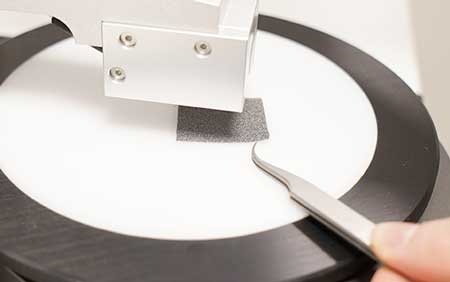| Mar 23, 2020 | |
Graphene cleans water more effectively(Nanowerk News) Billions of cubic meters of water are consumed each year. However, lots of the water resources such as rivers, lakes and groundwater are continuously contaminated by discharges of chemicals from industries and urban area. It’s an expensive and demanding process to remove all the increasingly present contaminants, pesticides, pharmaceuticals, perfluorinated compounds, heavy metals and pathogens. Graphil is a project that aims to create a market prototype for a new and improved way to purify water, using graphene. |
|
| Graphene enhanced filters for water purification (GRAPHIL) is one of eleven selected spearhead projects funded by The Graphene Flagship, Europe’s biggest initiative on graphene research, involving more than 140 universities and industries located in 21 countries. Chalmers is the coordinator of the Graphene Flagship. | |
| The purpose of the spearhead projects which will start in April 2020, building on previous scientific work, is to take graphene-enabled prototypes to commercial applications. Planned to end in 2023, the project aims to produce a compact filter that can be connected directly onto a household sink or used as a portable water purifying device, to ensure all households have access to safe drinking water. | |
 |
|
| The graphene filter works as a simple microfiltration membrane, and this simplicity requires lower operation pressures, amounting in reduced water loss and lower maintenance costs for end users. | |
| "This is a brand-new research line for Chalmers in the Graphene flagship, and it will be a strategic one. The purification of water is a key societal challenge for both rich and poor countries and will become more and more important in the next future. In Graphil, hopefully we will use our knowledge of graphene chemistry to produce a new generation of water purification system via interface engineering of graphene-polysulfone nanocomposites," says Vincenzo Palermo, professor at the Department of industrial and materials science. | |
Graphene enhanced filters outperforms other water purification techniques |
|
| Most of the water purification processes today are based on several different techniques. These are adsorption on granular activated carbon that removes organic contaminants, membrane filtration that removes for example, bacteria or large pollutants, and reverse osmosis. | |
| Reverse osmosis is the only technique today that can remove organic or inorganic emerging concern contaminants with high efficiency. Reverse osmosis has however high electrical and chemical costs both from the operation and the maintenance of the system. | |
| Many existing contaminants present in Europe’s water sources, including pharmaceuticals, personal care products, pesticides and surfactants, are also resistant to conventional purification technologies. Consequently, the number of cases of contamination of ground and even drinking water is rapidly increasing throughout the world, and it is matter of great environmental concern due to their potential effect on the human health and ecosystem. | |
| Graphil is instead proposing to use graphene related material polymer composites. Thanks to the unique properties of graphene, the composite material favours the absorption of organic molecules. Its properties also allow the material to bind ions and metals, thus reducing the number of inorganic contaminants in water. | |
| Furthermore, unlike typical reverse osmosis, granular activated carbon and microfiltration train systems, the graphene system will provide a much simpler set up for users. | |
| Grafenprov | |
| Graphil will not just replace all the old techniques, but significantly out-perform them both in efficiency and cost. The filter works as a simple microfiltration membrane, and this simplicity requires lower operation pressures, amounting in reduced water loss and lower maintenance costs for end users. | |
Upscaling the technique for industrial use |
|
| Chalmers has, in collaboration with other partners of the Graphene Flagship, investigated during the last years the fundamental structure-property relationships of graphene related material and polysulfones composition in water purification. A filter has then been successfully developed and validated in an industrial environment by the National Research Council of Italy (CNR) and the water filtration supplier Medica. | |
| Now the task is to integrate the results and prove that the production can be upscaled in a complete system for commercial use. | |
|
|
|
| Prof. Vincenzo Palermo and Dr. Zhenyuan Xia from the department of Industrial and Materials Science, Chalmers will support Graphil with advanced facilities for chemical, structural and mechanical characterization and processing of graphene oriented-polymer composite on the Kg scale. Chalmers’ role in the project will be to perform chemical functionalization of the graphene oxide and of the polymer fibers used in the filters, to enhance their compatibility and their performance in capturing organic contaminants. | |
| "We are very excited to begin this new activity in collaboration with partners from United Kingdom, France and Italy, and I hope that my previous ten years’ international working experience in Italy and Sweden will help us to better fulfil this project," says Zhenyuan Xia, researcher at the Department of industrial and materials science. | |
Partners |
|
| Graphil is a multidisciplinary project that consists of both academic and industry partners. The academic partners include Chalmers, the National Research Council of Italy (CNR) and the University of Manchester. The industrial partners are Icon Lifesaver, Medica SpA and Polymem S.A – all European industry leaders in the water purification sector. The aim is to have a working filter prototype that can be commercialized by the industry for household water treatment and portable water purification. |
| Source: Chalmers University of Technology | |
|
Subscribe to a free copy of one of our daily Nanowerk Newsletter Email Digests with a compilation of all of the day's news. |
